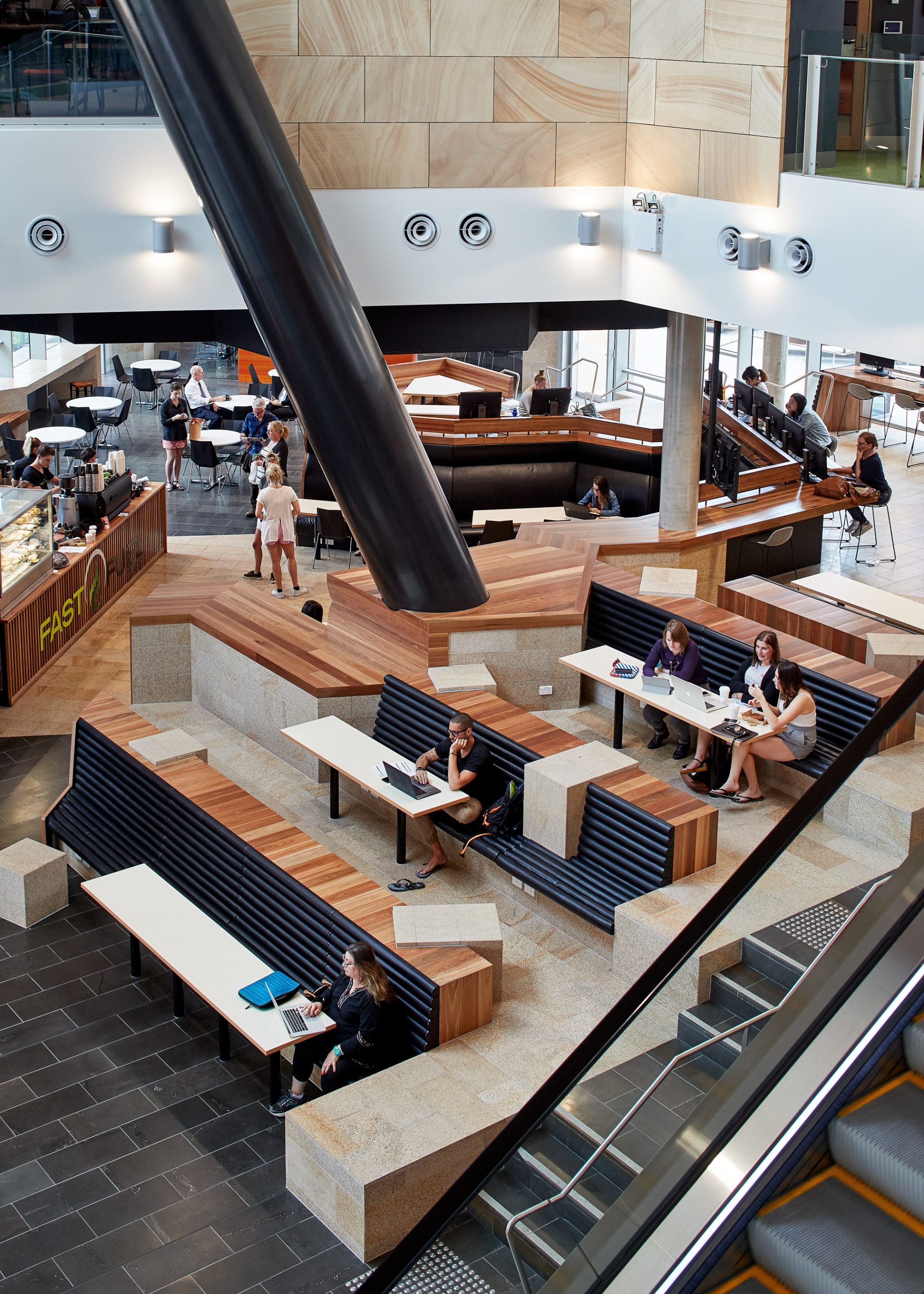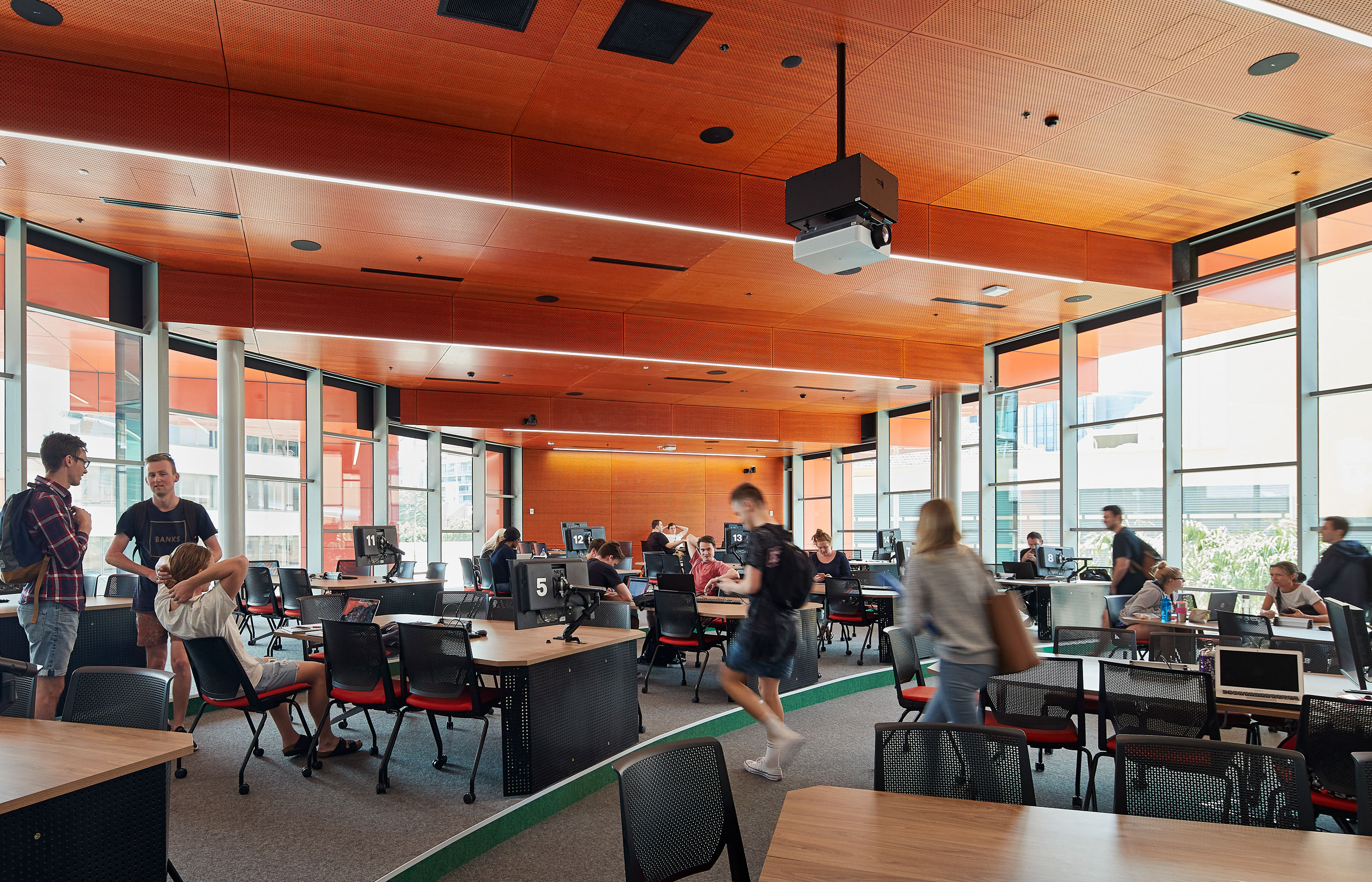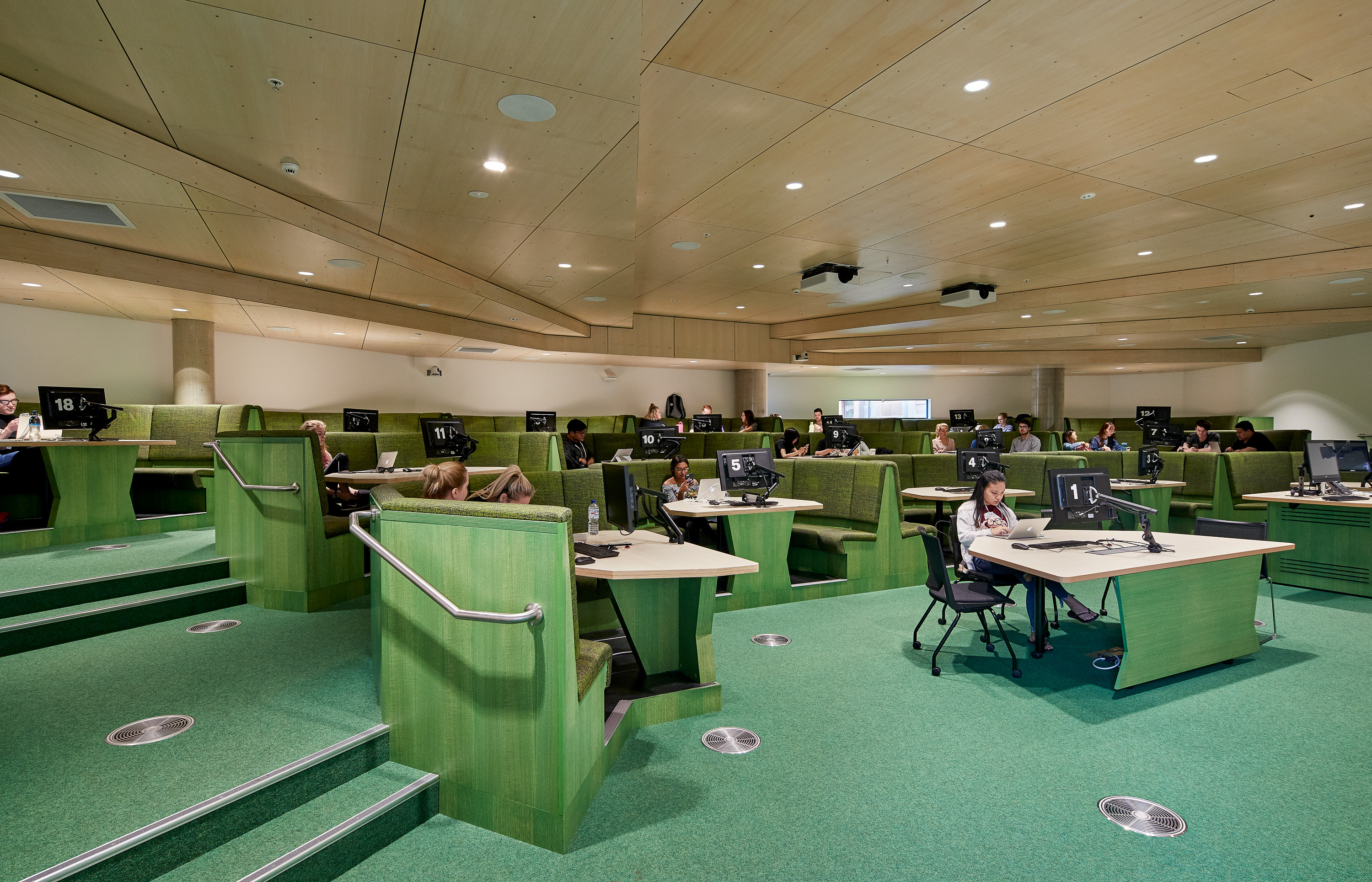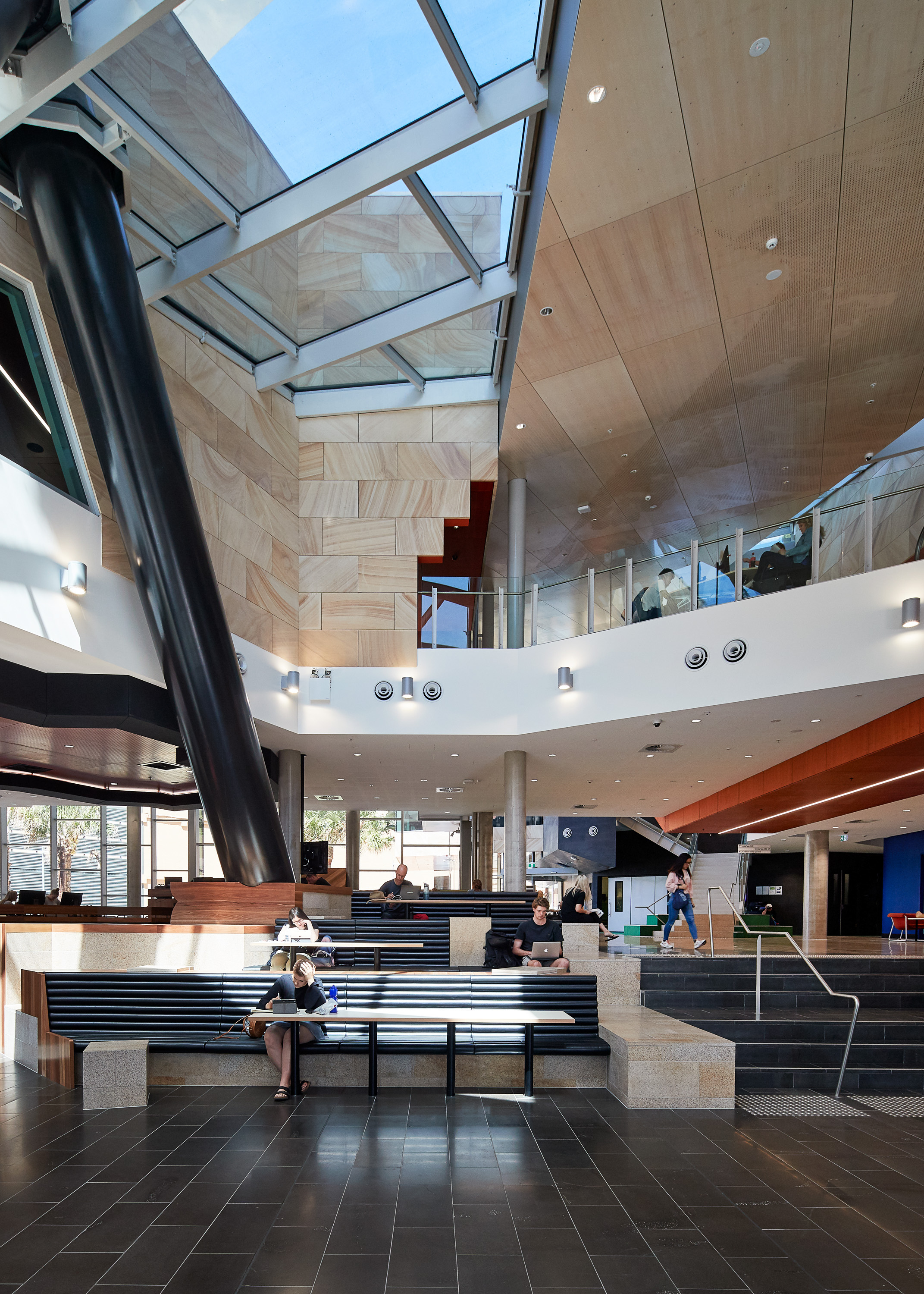
University of Newcastle campus designed around concept of ‘stickiness’
University of Newcastle campus designed around concept of ‘stickiness’
Share
As technology continues its relentless disruption of our day-to-day lives, forward-thinking designers and developers are responding in creative new ways.
The University of Newcastle’s NeW Space development, which was designed by Lyons Architecture in collaboration with local practice EJE Architecture, is a case in point. The nine-story vertical campus in the heart of Newcastle eschews conventional classrooms and lecture halls and instead offers students and staff communal spaces that encourage peer-to-peer learning as well as engagement with the wider community.

James Wilson, Lyons’ Director and project lead, says one highlight of the building’s design is the way in which it embraces contemporary teaching spaces.
“The design focuses on collaboration and group work, as well as harnessing technology. Standard lecture theatres have been replaced with flexible working spaces and booth seating. Scattered throughout NeW Space are social spaces and facilities for engagement with industry, business and the community,” he says.

At the heart of the thinking behind the design is a concept of ‘stickiness’, which involves the creation of spaces where students want to be. This type of design thinking puts the student at the centre, giving each individual the choice about the type of space they want to occupy.
One third of the NeW Space campus is dedicated to student social and study use. This encourages a sense of belonging and a desire among students to collaborate and engage with their peers on campus.
The footprint of NeW Space allows people to enter at ground level and move freely through all nine levels of the building.
James explains, “The idea of the campus being open and porous on each level is reinforced by a high level of vertical interconnectivity through the building, facilitated by escalators, lifts and open stairs.” Outdoor areas linked by open-air walkways enable students and staff to access fresh air across upper levels of the building.
The spaces are also designed to reflect students’ changing needs throughout the year — promoting collaborative activities at the start of semester and adapting to accommodate individual study as students prepare for exams.

The altered approach to traditional learning spaces allowing for peer-to-peer configurations support a ‘flipped classroom’ model and allow instructional face-to-face and online content to be delivered outside the traditional learning environment. These spaces are threaded throughout each level, all designed with untethered technology and flexible modalities to enable blended learning activities that can connect globally.
Double height balconies enable students to study in light filled interior and outdoor spaces, connecting to fresh air and overlooking expansive views taking in Nobbys Headland and other key local landmarks in Newcastle. This emphasises the concept of ‘wellness’ in the vertical campus adding to the outdoor learning opportunities provided on the groundfloor green amphitheatre.

James explains that the variety of spaces and facilities offered by NeW Space is also attracting local business people and community groups to use the building for meetings and workshops.
“The public nature of the immediate civic precinct introduces exciting possibilities for the way the community can engage with the new building’s spaces, streets and lanes, including a generous ‘campus green’ at ground level that acts as a community interaction area and outdoor learning zone,” he says.
Photography: Peter Bennetts
















